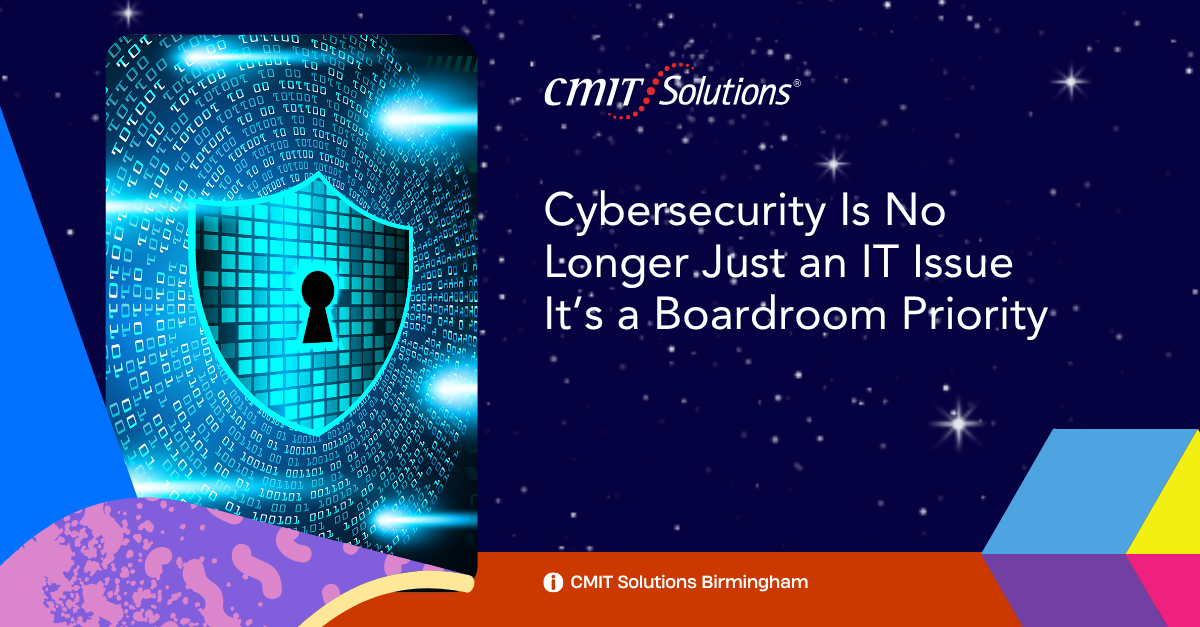In today’s digitally driven landscape, cybersecurity has evolved beyond a technical concern into a full-fledged strategic imperative. No longer is it the sole responsibility of IT departments—it now demands focused attention from C-suite executives and boards of directors. As businesses grow increasingly reliant on digital tools, cloud systems, remote work, and third-party platforms, the risks surrounding data breaches, ransomware, and compliance violations have grown exponentially.
This blog explores why cybersecurity must be considered a board-level priority, what that entails, and how organizations can begin bridging the gap between technical resilience and strategic foresight.
What Does It Mean to Make Cybersecurity a Boardroom Priority?
Historically, cybersecurity was seen as a backend function—something to be handled quietly by the IT team. However, modern business risks are intimately tied to digital exposure. A cyberattack can cripple operations, devastate customer trust, and bring about regulatory consequences that impact every department. To treat cybersecurity as a boardroom priority means acknowledging that its consequences extend far beyond IT—it affects brand reputation, shareholder value, customer loyalty, and ultimately business survival.
This transformation calls for board members and executives to view cyber risk in the same category as financial, legal, and operational risks. It means asking tough questions, approving adequate budgets, and integrating cybersecurity into every business decision.
Why Cybersecurity Is No Longer Just the IT Department’s Job
The digital transformation accelerated by the pandemic led many companies to adopt new technologies at lightning speed—remote collaboration tools, cloud infrastructure, automation platforms, and more. However, every new digital asset becomes a potential threat vector if not properly secured. This expanded attack surface means the burden of cybersecurity must be shared across all leadership levels.
From finance to HR, marketing to operations, every department generates and handles data. Cybersecurity policies and tools must be woven into everyday workflows, and it’s up to business leaders—not just IT managers—to ensure this alignment.
Supporting this shift is the broader move toward proactive IT support models. As discussed in Proactive IT Support in Birmingham, reactive “break-fix” approaches no longer suffice in a world where downtime means dollars lost.
Board-Level Questions That Define a Strong Cyber Strategy
Cybersecurity oversight starts with the right questions. Boards should regularly ask:
- Are we regularly assessing cyber risk across all departments?
- What is our incident response plan?
- How often do we back up critical data, and have we tested our recovery systems?
- Are we meeting current industry compliance standards (e.g., HIPAA, GDPR, CMMC)?
- Do we have cyber insurance, and what does it cover?
- How do we train employees on cybersecurity best practices?
- Are we managing third-party and supply chain risk effectively?
Boards must treat these questions not as periodic reviews but as standing agenda items in executive meetings. This ensures cybersecurity becomes a cultural expectation rather than an emergency response.
How Threats Have Evolved—and Why Boardrooms Must Respond
The modern cyber threat landscape is unrecognizable from even five years ago. Attackers are no longer lone hackers in basements—they’re organized, well-funded criminal networks and nation-state actors. From ransomware-as-a-service to deepfake impersonations and AI-powered phishing, the tools available to malicious actors have become terrifyingly sophisticated.
In The Rising Tide of Cyber Threats in Birmingham, we emphasized the importance of adopting a Zero Trust framework. This model assumes no user or device should be inherently trusted—even if it exists inside the network. Instead, identity verification, endpoint monitoring, and behavior analysis become the norm.
Leaders must adapt accordingly, ensuring budgets and strategies reflect the scope and scale of these threats.
The Cost of Inaction: Business Risks Beyond the Firewall
Failing to prioritize cybersecurity at the top can have disastrous consequences:
- Financial Losses: Cyberattacks cost businesses billions annually in downtime, ransom payments, lawsuits, and recovery expenses.
- Regulatory Fines: Non-compliance with data regulations can result in heavy penalties.
- Reputational Damage: Data breaches erode customer trust and brand equity.
- Leadership Fallout: Executives may be held personally accountable for poor cyber governance.
In What’s Next in IT, we predict that legal scrutiny around cybersecurity will intensify—meaning boards can’t afford to remain passive.
From IT Spend to Strategic Investment: ROI of Cybersecurity
Cybersecurity isn’t just a cost—it’s a value creator. A well-secured business avoids disruption, attracts partnerships, and differentiates itself in crowded markets. Investing in cybersecurity tools, services, and policies not only protects the organization but also improves operational efficiency.
Consider the hidden savings of avoiding one ransomware incident. Now multiply that by the peace of mind gained through 24/7 monitoring, secure backups, and automated compliance reporting. As detailed in Compliance Without the Chaos, automation is making compliance and risk management easier and more cost-effective.
Empowering Leaders with Real-Time Visibility and Control
C-suite leaders shouldn’t have to wait for IT reports to understand their company’s risk posture. Modern cybersecurity platforms now offer real-time dashboards that display vulnerabilities, user behavior, and threat alerts in one centralized interface.
This kind of transparency allows boards to make informed decisions, allocate resources effectively, and respond quickly to emerging threats. As seen in Next-Gen Network Management, visibility is as much about performance as it is about protection.
The Role of Cloud and Communication in Cyber Strategy
Hybrid work models and cloud adoption have expanded both the capabilities and vulnerabilities of SMBs. As outlined in Crafting a Scalable Cloud Strategy, boards must ensure that cloud solutions are secured with identity access controls, encryption, and ongoing audits.
Similarly, unified communication platforms—highlighted in The Future of Business Communication—must be deployed securely, with end-to-end protection for voice, video, and messaging.
Strategic Technology Procurement Starts at the Top
Cybersecurity should guide procurement decisions—not follow them. Every piece of software or hardware introduced into the network carries inherent risks. As shared in Smarter Tech Buying in 2025, choosing scalable and secure technology ensures long-term success.
Boards should demand vendor risk assessments, contractual obligations for data protection, and clear ownership of post-sale support.
Cybersecurity and Consulting: A Unified Approach
Even the most sophisticated internal teams benefit from external guidance. The insights provided in Tech Strategy for Growth emphasize the importance of strategic IT consulting in aligning security with growth plans.
Cybersecurity isn’t static—it evolves alongside your business. Consulting partners can help build resilient architectures, train staff, assess vulnerabilities, and stay ahead of regulations.
Tailored MSP Support for Executive Accountability
No two businesses are alike. That’s why Custom MSP Packages offer a path to security that aligns with budget, industry needs, and growth objectives. These packages also create clear lines of accountability and reporting for executive teams.
Whether it’s through monthly dashboards, vulnerability scans, or 24/7 monitoring, MSPs bridge the gap between IT execution and executive decision-making.
Conclusion: Cybersecurity Leadership Starts at the Top
In today’s world, cybersecurity decisions aren’t just technical—they’re operational, financial, and reputational. The businesses that succeed are those where executives and boards understand this, own it, and act on it.
As reinforced in Rooted in Resilience, long-term growth is only possible when built on a secure foundation. CMIT Solutions of Birmingham South is here to help your leadership team elevate cybersecurity from a checkbox to a boardroom strategy.
The future of your business depends on the actions you take today. Is cybersecurity on your next board agenda?







